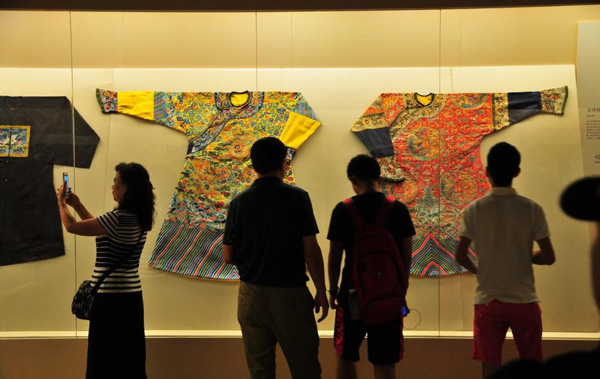Beijing, capital for more than eight hundred years, also boasts some of the best handicrafts in the country if not in the world. Eight types of handicrafts in particular such as jade carving and cloisonne have been identified as the "Eight Marvelous Handicrafts of Beijing". Recently, these eight handicrafts are the focus of a newly opened exhibition at the Capital Museum in Beijing.

Eight types of handicrafts in particular such as jade carving and cloisonne have been identified as the "Eight Marvelous Handicrafts of Beijing".
The three hundred pieces on display feature both the masterpieces from late masters, and works from contemporary artists. Many locals are paying a visit to see these chefs-d'oeuvre up close.
The center piece is none other than this carved lacquarware shaped like the famous 3000-year-old bronze Simuwu Square Cauldron. It shows in exquisit detail scenes of founding ceremony of the People's Republic of China.
"Three hundred layers of lacquer were applied before it were carved. It took three years to complete, from design to finish," said Ye Xiaoxi, Director of China National Arts & Crafts Museum.
Being the capital for more than 800 hundred years since Jin dynasty, Beijing has always attracted the cream of the crop artisans from across the country. Since the Yuan dynasty, the court recruited the best craftsmen to serve the imperial family. These artisans brought the best of the regional crafts to the captial.
In the process, what is known as royal crafts came into being, which reached its pinnacle during the Qing dynasty. Eight types of craftsmanship were especially revered. They are jade sculpture, ivory sculpture, cloisonne, carved lacquerware, gold inlayed lacquerware, filigree, embroidery and royal textile.
With modernization however, these crafts slowly faded. Only in recent years have they begun to see a revival with eight types of craftsmanship enlisted as national or municipal intangible heritage. Meanwhile, preferential policies have attracted youngsters taking up these trades again, such as in the case of 19 year old Lu Junlong.
"I'm still an apprentice. So this piece will take quite a long time for. For a master, it would probably take one or two months to complete. One has to have patience to create something good," said Lu Junlong, Beijing Embroidery Pratitioner.
Visitors to the museum can see how a piece of artwork is made from start to finish for each type of the royal crafts. It's a rare chance for visitors to experience a long lost tradition and one that could only be found in the royal court. Luckily, there's still plenty of time to catch a glimpse before the exhibition ends in mid November.















